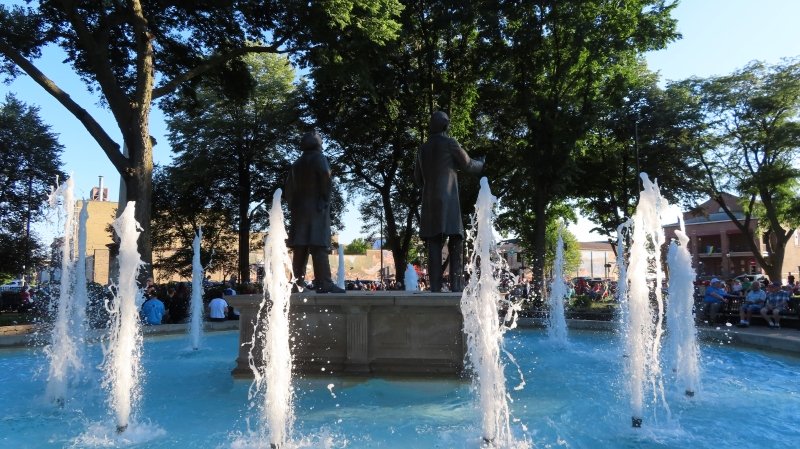Historical Context of the Underground Railroad
The Underground Railroad was not a literal railroad, but a network of secret routes and safe houses that played an instrumental role in the abolitionist movement to combat slavery in the United States, particularly from the early 19th century until the Civil War. This clandestine operation was characterized by its mission to assist enslaved African Americans in their bid for freedom, allowing them to escape to Northern states and Canada. Its significance cannot be understated, as it reflected the moral opposition to slavery and showcased the collective efforts of both African Americans and their allies, including notable abolitionists such as Harriet Tubman and Frederick Douglass.
Key terms associated with the Underground Railroad include “conductors,” who were individuals that guided escaped slaves through various routes, and “stations,” which referred to safe houses that provided shelter. The timeline of this movement extends from the early 1800s, gaining momentum especially after the passage of the Fugitive Slave Act in 1850, which heated tensions between the North and South. During this time, the movement flourished particularly in Illinois, which became a strategic location due to its geographic position. Illinois offered a gateway to more liberated territories, making it a pivotal junction in the fight against slavery.
The operation of the Underground Railroad was not without its challenges. It required immense bravery and resourcefulness, as those involved risked severe consequences, including imprisonment and violence. In the context of 19th-century American history, the Underground Railroad stood as a testament to the struggle for human rights and dignity, making profound contributions to the eventual abolition of slavery. Understanding this historical context is essential to appreciating Ottawa, Illinois’s role in this significant movement, as the city and its inhabitants took substantial risks to ensure the safe passage of countless individuals seeking liberation.
Ottawa, Illinois: A Key Stop on the Underground Railroad
Ottawa, Illinois emerged as a pivotal location on the Underground Railroad during the 19th century, due to its strategic geographical position and the commitment of its residents to the abolitionist cause. Situated at the confluence of the Fox and Illinois Rivers, Ottawa served as a vital waypoint for fugitive slaves seeking refuge and freedom. The town’s accessibility to major waterways facilitated the movement of both people and supplies, making it an ideal stop for those escaping the bonds of slavery.
Historically, Ottawa’s population played a significant role in the abolitionist movement. The town was home to a diverse group of individuals, including Quakers and other anti-slavery supporters, who believed in the fundamental rights of all people. This inclusive ideology fostered a supportive environment for runaway slaves. Local residents provided safe houses, sustenance, and guidance, often at great personal risk. Notable figures, such as John H. Hossack and other prominent abolitionists, worked diligently to orchestrate and expand the network of support for those escaping captivity.
Personal narratives and testimonies from the period illustrate Ottawa’s integral role in the Underground Railroad. For example, Harriet Tubman, one of the most renowned conductors, may have passed through this town, utilizing the established routes to guide others toward freedom. The stories of successful escapes, hidden in the annals of Ottawa’s history, reveal a community united in their efforts against injustice. Additionally, documented actions of local residents who aided these efforts can be found in historical records and accounts, cementing Ottawa’s position as a critical stop along the path to liberation.
Ultimately, Ottawa, Illinois stands as a testament to the courage and resilience of those who fought against the institution of slavery. Its contribution to the Underground Railroad underscores the importance of local action in the broader fight for freedom and equality.
The Hidden Tunnels: Myths and Realities
The lore surrounding the existence of hidden tunnels beneath Ottawa, Illinois, has piqued the curiosity of historians, residents, and tourists alike. Many tales suggest that these subterranean passages were a crucial component of the Underground Railroad, aiding enslaved individuals in their quest for freedom. Although compelling, the reality of these tunnels requires a nuanced analysis informed by historical records and local accounts.
Historical investigations into the claims of tunnel systems reveal a mixture of fact and fiction. While there are documented instances of underground routes used by the Underground Railroad in other regions, Ottawa’s story appears to be less defined. Researchers have combed through archived materials, including newspapers from the 1800s, property deeds, and local government records, yet findings continue to elude definitive conclusions about extensive tunnel networks within the city. Some records reference the basements of certain buildings where clandestine meetings occurred, thus contributing to the myth of an interconnected tunnel system.
Local lore often cites powered anecdotes of clandestine activities and nighttime escapes through darkened passages. Indeed, the historical context of Ottawa plays a significant role in shaping these narratives as a location that supported abolitionist efforts during the pre-Civil War era. Notably, oral histories taper into myths as they are recounted through generations, creating a tapestry rich with intrigue but lacking in substantiated evidence. Some historians emphasize the importance of distinguishing between the romanticized vision of the Underground Railroad, characterized by a network of tunnels, and the likely reality involving more traditional methods of secretive travel.
Efforts by archaeologists and local experts to demystify the urban geography of Ottawa have undergone periodic scrutiny. While a few excavations have yielded remnants of 19th-century architecture, no definitive evidence of an expansive tunnel network has surfaced to date. Consequently, while tales of hidden tunnels are steeped in intrigue, they constitute a blend of myth and reality, encapsulating the enduring legacy of the Underground Railroad’s spirit within the city.
Cultural Legacy and Modern Recognition
The legacy of the Underground Railroad remains a significant aspect of Ottawa, Illinois, symbolizing the city’s deep historical roots and its role in the abolitionist movement. This history is not merely a remnant of the past but is actively commemorated through various initiatives aimed at educating both residents and visitors about the profound struggles faced by those seeking freedom. Ottawa’s contributions to the Underground Railroad serve as a foundation for understanding the broader context of American history and the ongoing fight for social justice.
Numerous memorials and educational programs have emerged in Ottawa to honor this legacy. Local organizations have established initiatives that highlight the stories of those who bravely participated in the Underground Railroad. For instance, guided tours featuring key historical sites provide insight into the experiences of escaped slaves as they traversed Ottawa on their journey to freedom. Such programs aim not only to educate but also to foster a sense of community ownership of this critical aspect of history.
In addition to tours, Ottawa hosts events that celebrate the achievements of the abolitionist movement, promoting discussions around its relevance to contemporary social justice issues. These annual events often include lectures from historians, workshops, and art exhibits designed to engage the community and encourage reflection on the themes of freedom and equality. Furthermore, local schools implement educational programs that focus on the history of the Underground Railroad, ensuring that younger generations are informed about this essential component of their heritage.
Moreover, efforts by various residents and organizations to preserve documents and artifacts related to the Underground Railroad enhance Ottawa’s reputation as a community committed to remembering and honoring its past. By integrating the stories of those who contributed to the abolitionist cause into the fabric of Ottawa’s modern identity, the city not only acknowledges its historical significance but also fosters a culture of awareness and activism that will resonate for years to come.









Leave a Reply